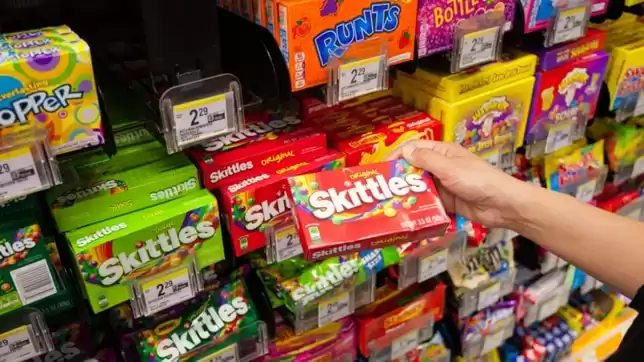Skittles Ban in California: Understanding the Law and Food Restrictions
California becomes the first state to ban red dye No.3 and other dangerous food additives, raising concerns about Skittles.
California has made history by becoming the first state to ban red dye No.3 and other dangerous food additives. This groundbreaking law was passed by the state legislature in September and was recently signed by Governor Gavin Newsom. While the legal penalties for using these banned ingredients won't go into effect until 2027, this four-year period allows manufacturers to adjust their recipes and comply with the new regulation.
In addition to red dye No.3, the California Food Safety Act also prohibits products containing brominated vegetable oil, potassium bromate, and propylparaben. These materials are either banned or highly regulated in the European Union and other countries to ensure their limited use.
Red Dye No.3 was banned in cosmetics back in 1990, and many public health experts question why it has been allowed to remain in the country's food. Currently, this chemical is found in hundreds of products, including those made by popular brands like Betty Crocker and Hostess. Assemblymember Jesse Gabriel, who played a key role in the bill's debate, highlighted that the European Union has already banned these chemicals due to scientific studies showing significant public health risks such as increased cancer risk, behavioral issues in children, harm to the reproductive system, and damage to the immune system.
The decision of Governor Newsom to sign this law has been widely applauded, with Asm. Gabriel expressing his support and stating that the "landmark bill" will protect families and children from harmful chemicals. Interestingly, his post on social media featured a bag of Skittles, which led fans of the candy to question whether Skittles would be affected by the ban.
While Skittles are indeed one of the products that could potentially be banned under the new law, the current recipe for Skittles available in the United States does not contain red dye No.3. Therefore, Skittles would not be affected by this ban.
However, there are still numerous food products that do contain this dye. The Environmental Working Group, a non-profit organization, has identified various fruit cups produced by Dole that may need to be removed from shelves unless changes are made to their recipes. Additionally, they found that red dye No.3 is present in unexpected products like Woodville Farms Canadian Style Bacon, Ensure High Protein Nutrition Strawberry Shake, and Iberia Spanish Style Tomato Sauce.
Overall, California's ban on red dye No.3 and other dangerous food additives marks a significant step towards prioritizing public health and safety. By taking this action, the state aims to protect its residents from the potential risks associated with these chemicals. While Skittles may be safe from the ban, there are still many other products that will need to undergo changes to comply with the new regulations.












Comments on Skittles Ban in California: Understanding the Law and Food Restrictions